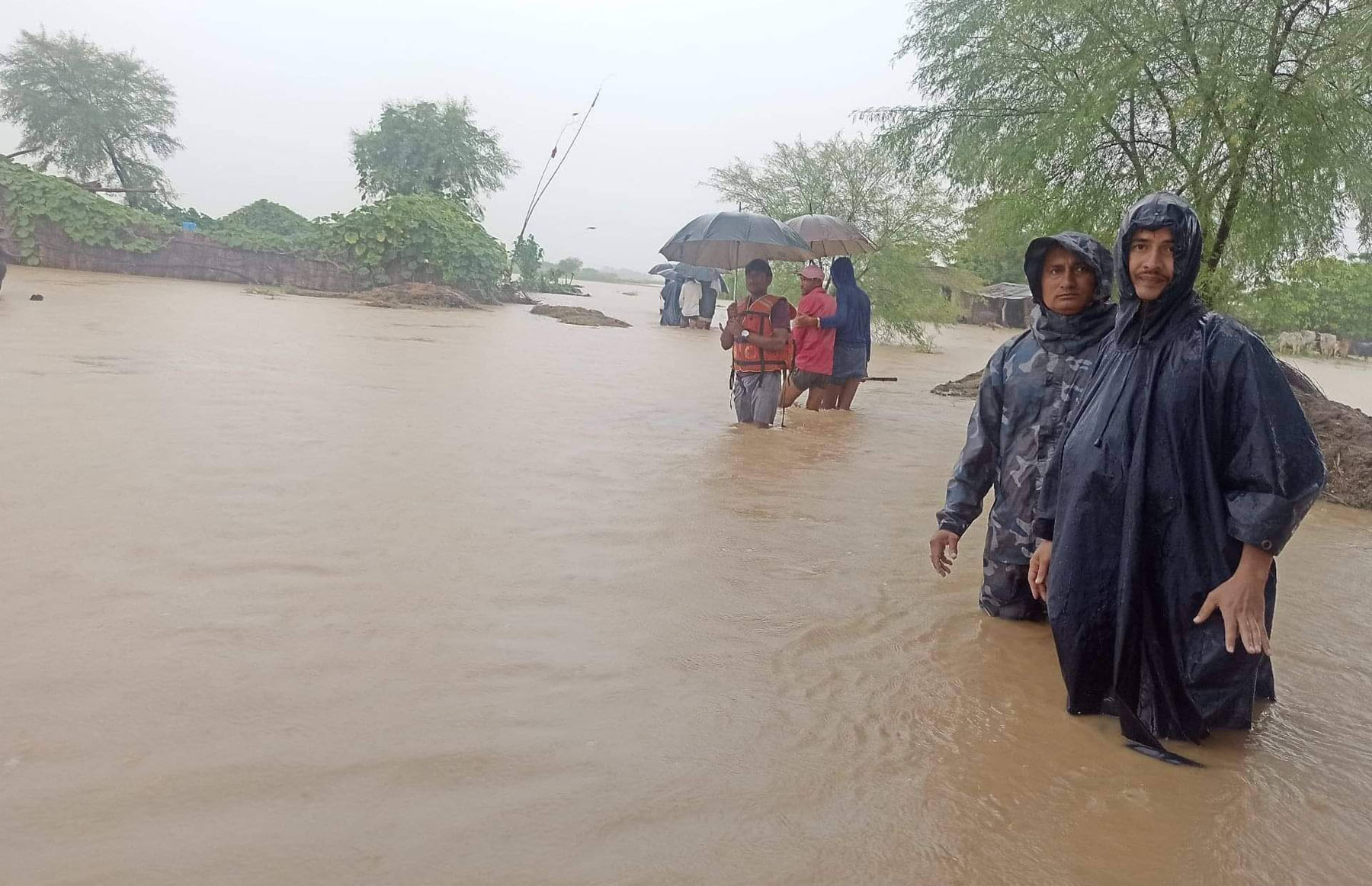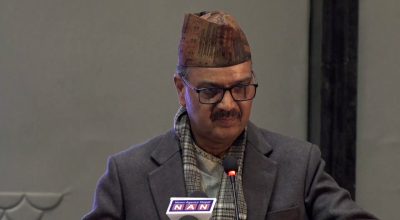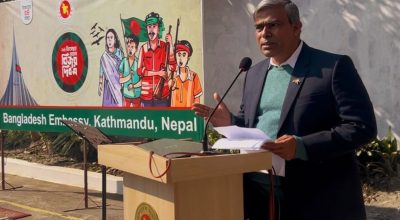
Manahari, July 18: Saroj Kumar Khanal, who lost his 11 family members to a flood at Phedigaun of then Palung VDC-9 (now Thaha Municipality) in Makawanpur district on 19 July, 1993, is still haunted when he remembers the tragedy.
He felt touched seeing all his family members swept away by the flood that washed away the whole village. He had not even imagined that such disaster took place. On that fateful day, he was working at a ‘development’ house across after having lunch prepared by his mother. At around 4 pm, there was a heavy rainfall making it difficult for him to go to his house.
“One could easily estimate that the rain could bring a disaster. I spent that night praying with god that nothing disastrous incident could take place,” he said. The following morning, he left for his home braving torrential rainfall. He reached his house only to find his family members and house being swept away.
“My family members were washed away, and cattle found floating in the pool of the water. All properties, food grains and clothes were damaged. Seeing this situation, I went unconscious,” he recalled the tragedy. There were none around to understand his pains and hear his screams. He eventually collected himself. (His spouse, three children, a father, a mother, two brothers, and two nephews were killed in the disaster).
“Misfortunes befell me all of a sudden.” There were houses built at a hill, and two gorges in between the village. Roots of the Uttis trees swept away by flooding were stuck in the gorges blocking the streams and creating a pool of water. The pool burst all of a sudden washing away the houses, said Ramhari Bista, then VDC chair.
Dambar Bahadur Rumba of then Aagra VDC-8 (now Thaha Municipality-8) is another victim of the flood. After his textbooks and sandals were swept away in crossing the local flooded river while going to the school, he quit his studies and left for Kathmandu, now the federal capital, with his uncle to search for a job. Being deprived of basic facilities due to poverty, and dreaming of earning money for himself and the family, he worked as a dishwasher at a hotel in Kathmandu. After around eight months of work in Kathmandu, he returned home with some money in hopes of bringing a smile on the face of his family members. But his dream of supporting his family shattered after all his family members were swept away by the flooding.
He reached Mahadevbeshi of Dhading district from Kathmandu when he heard that all his family members—a mother, a father, a sister, two brothers and a sister—were killed in the disaster. “When I reached home after four days of the incident, the villagers were retrieving bodies of my family. I felt disheartened. This tragedy always haunts me,” he said. He also lost food he had, seven goats and 21 ropanis of land to the flooding.
Harka Bahadur Tamang is another person affected by the flooding. Although his family members remained saved as they were taking a shelter at nearby school on that fateful moment, he lost his house, clothes, food and cattle he had.
Tamang did not know about the ways to stay alert and be safe from a landslide and a flood. “Then, there had not the warning system in place. The whole village could be saved from flooding once there was such system in place,” he said.
“The torrential rain with lightning was terrifying. No houses in the neighbourhood were seen. All the houses except the school were swept away by the flood when it dawned the following morning. The whole village turned into marshlands. Big stones were deposited in the places where there were houses and sheds. There were two small gorges in the village. These gorges were filled and there was a flood.”
According to Khanal, 61 people lost their lives to the disaster. The deceased included three family members of a local Pratap Basnet, three of Pahalman Kami, seven of Kanchha Kami, three of Saila Dai, five of Tamang Dai and two persons from Nange village. Twelve houses were swept away by the flood.
However, around 30 years into the disaster, the government seems least concerned about conserving the damaged village so far, said the local people.
Neither had they got substantial reliefs so far, he said, adding that only those having connection with those in power have availed reliefs from the government. The fear couples during monsoon when the risk of a landslide and a flood is higher, he said.
Still, we are living here in constant fear of being swept away by a landslide or a flood without proper safety measures, said Tamang.
There are around 150 people of 35 households in Phedigaun village at now Thaha Municipality-2.
The village is always at risk of the local Tribeni river, said the ward chair Bam Bahadur Sintan. Without budget, only the construction of gabions has taken place as a safety measure, he admitted. The villagers are forced to live braving the risks as there is not a proper place to shift them, he said. What’s more, the 2015 earthquake has loosened the soil further increasing the risk. He sought the help of the central government in saving the village, as budget from the local level alone, he said, is not enough.
Only general repair work like the construction of gabions took place with Rs 20 million released from the provincial government, said former mayor of the municipality Lawasher Bista.
Seeking budget to do repair and construction work, he blamed that the line ministry in the federal government was ignorant despite submitting a proposal along with the report of the losses caused by the flood from time to time. According to a survey, at least Rs 240 million is required to control disasters.
According to Bista, the reservoir could be prevented from bursting thus saving the village from a flood when the overflowing water is channelised into the main Tribeni river through a bio- engineering technique. RSS















